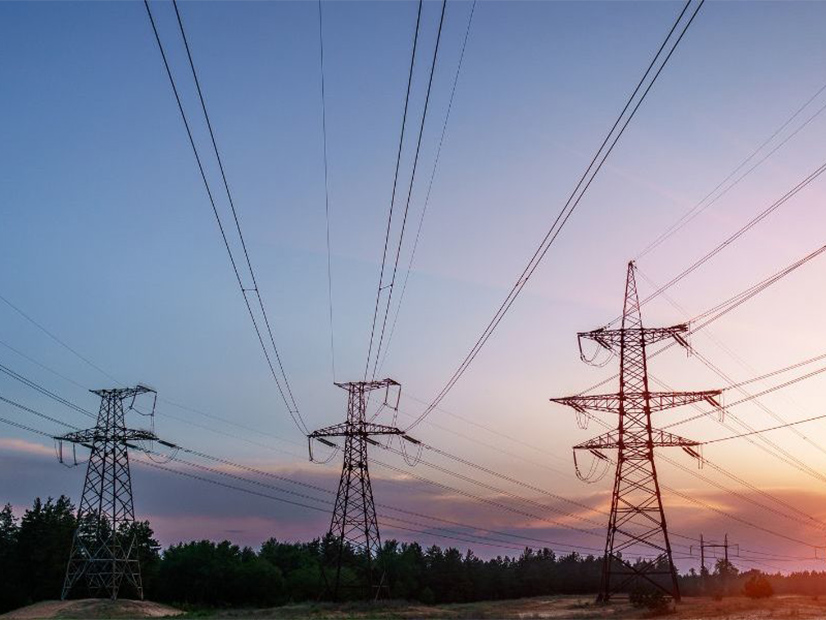
The U.S. Department of Energy on Wednesday announced it is funding eight projects across 13 states and Puerto Rico to demonstrate how solar, wind, storage and other clean energy resources can support grid reliability and efficiency.
DOE will allocate $26 million in Infrastructure Investment and Jobs Act funding through its Solar and Wind Grid Services and Reliability Demonstration Funding Program, which is designed to demonstrate the reliable operation of energy systems that have up to 100% of their power contribution from solar, wind and battery storage resources.
The projects being awarded deploy “innovative” clean energy technologies at 15 sites “to build and support a resilient grid that automatically adjusts to changing demands,” according to the department. They will support the administration’s “efforts to accelerate a decarbonized grid, expand the adoption of affordable clean energy and strengthen America’s energy security while combating the climate crisis,” it said.
Research teams comprising utilities, laboratories, universities and industry will test how wind and solar plants can more reliably transmit electricity and protect against disruptions to high-voltage power lines. The projects will also monitor and test controls that allow the grid to restore power quickly and efficiently after blackouts.
“As threats and climate risks to America’s energy infrastructure continue to evolve, DOE is laser-focused on ensuring our power grid is strong and reliable as it incorporates a historic level of renewable resources,” Energy Secretary Jennifer Granholm said in a statement. “Today’s announcement will help build a resilient grid that the American people can trust to deliver reliable, affordable, clean electricity to their homes and businesses.”
A recent study by DOE’s National Renewable Energy Laboratory’ found that wind and solar energy could provide as much as 80% of generation on a grid run by 100% clean electricity. Achieving those levels would require rapid and sustained growth in installed solar and wind generation capacity, it said, with nuclear energy helping to make up the difference.
The study modeled four scenarios that deployed new clean energy technologies at an unprecedented scale and rate to achieve 100% clean electricity by 2035. Wind and solar energy would provide 60 to 80% of generation in the least-cost electricity mix in 2035; overall generation capacity would grow to roughly three times the 2020 level by 2035, including a combined 2 TW of wind and solar.
The selected projects and awards are:
- Consolidated Edison’s initiative to demonstrate transmission protection strategies in New York and Virginia that reduce outages as the grid moves to inverter-based generation. If successful, the project will demonstrate to the transmission system protection, operation and planning industries that the grid can operate safely and reliably with any mix of energy sources, including 100% inverter-based resource (IBR) generation. ($3 million)
- an Electric Power Research Institute project with multiple balancing authorities and utilities to demonstrate grid services capabilities in Michigan, Nebraska, Texas, New Mexico and California. ($3.4 million)
- General Electric Renewable Energy’s project demonstrating grid-forming inverters at the Great Pathfinder wind plant in Iowa. ($3.5 million)
- a National Renewable Energy Laboratory project in Hawaii that aims to further the understanding of the grid’s behavior in response to faults in scenarios with high IBR levels. ($2 million)
- Pacific Gas and Electric’s development of an automated analysis tool for utility engineers to address rapid changes in the electric grid, such as increased solar generation. ($2.5 million)
- Portland General Electric’s demonstration of grid-forming inverters at the Wheatridge Renewable Energy Facility in Oregon, North America’s first energy center to combine wind, solar and energy storage systems in one location. ($4.5 million)
- the University of Illinois at Chicago’s project in Illinois and Puerto Rico using an innovative modeling, protection and control framework to ensure the bulk power system’s reliable operation with 100% IBR generation, as they have much different fault characteristics than traditional synchronous generators. ($3 million)
- Veritone’s project designed to boost confidence in renewable power by using the company’s artificial intelligence-powered distributed energy resource management system (iDERMS) technology in New Mexico. ($3.9 million)
DOE and its applicants will go through a negotiation process before any funding is issued. The department could cancel negotiations and rescind the selection for any reason during that time.


